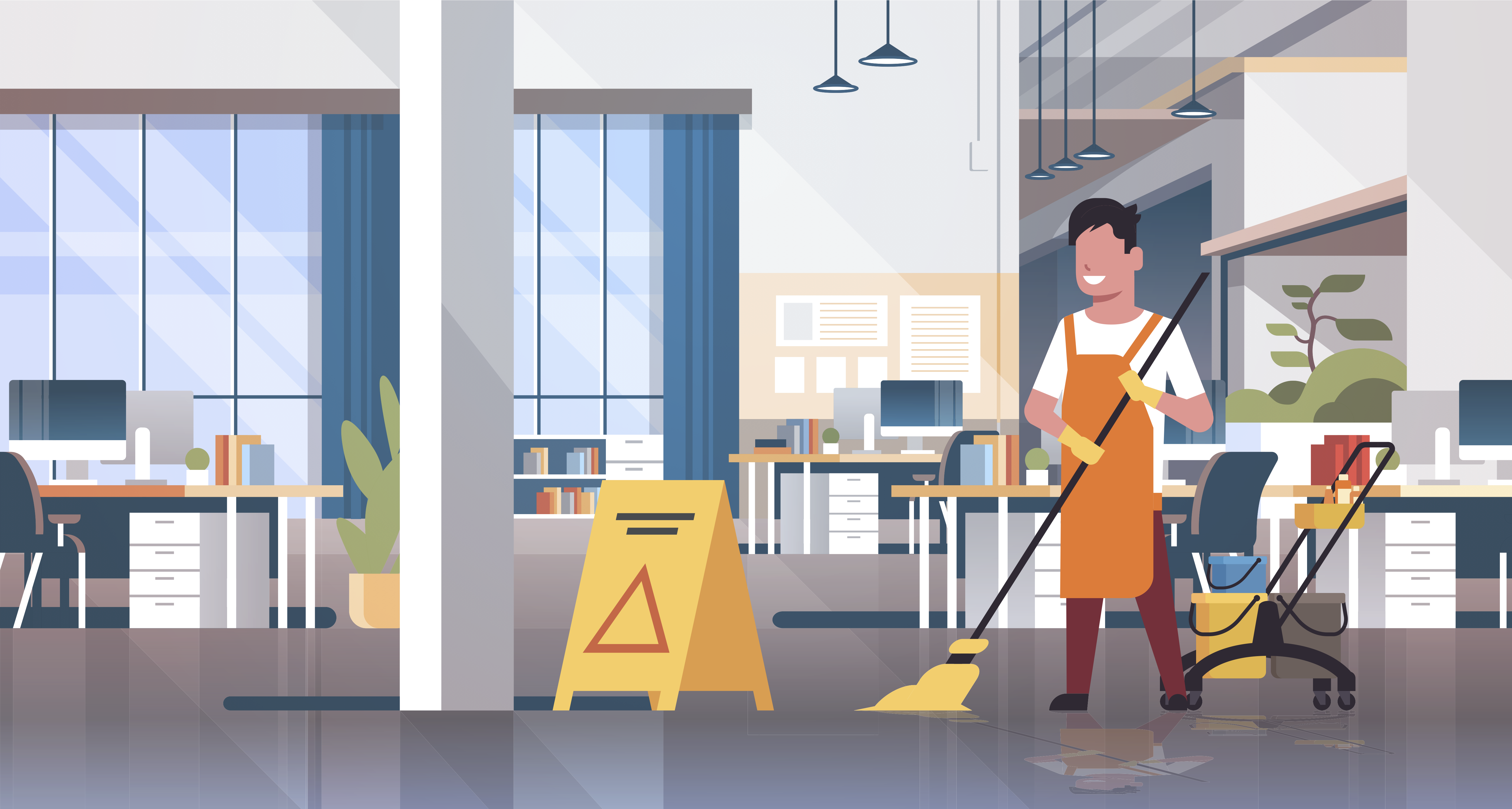As I write this, information is changing minute-by-minute. For very good reasons, there is a sea of data surrounding proper cleaning and disinfecting protocols during this crisis. The purpose of this document is to provide some very practical information for the present and future.
Differences Between Cleaning & Disinfecting
In a few words – cleaning removes germs, disinfecting kills germs
Cleaning works by using a detergent and water to physically remove germs from surfaces. This process does not necessarily kill germs, but by removing them, it lowers their numbers and the risk of spreading infection.
Disinfecting works by using chemicals to kill germs on surfaces or objects. This process does not necessarily clean dirty surfaces or remove germs, but by killing germs on a surface after cleaning, it can further lower the risk of spreading infection.
What Your Janitorial Team Should Be Doing Right Now
In a few words – keep up normal cleaning duties and disinfect high touch surfaces daily
Depending on your setting, your outsourced or in-house janitorial team likely cleans most surfaces daily, and cleans and disinfects restrooms and break rooms daily. During normal flu season, your team likely disinfects high touch points such as doorknobs and door handles, light switches, handrails, and chair handles more frequently.
If you do not have a confirmed case of COVID-19 it is important to continue normal cleaning to remove any dirt and other soils before disinfecting. If a surface is not cleaned first, germs can hide under soils and reduce the effectiveness of the disinfectant. In addition, ask your team or vendor to disinfect high touch areas daily.
An Important Consideration: Disinfecting takes more time than cleaning because of “dwell time” (more on that later). As such, consider adding more team members to your janitorial crew for the short-term to clean and disinfect.
What Is Dwell Time & Why Does It Matter
In a few words – Dwell time is the amount of time a disinfectant must remain wet on a surface to effectively kill germs
For a disinfectant to be effective, it must remain wet on a surface for the recommended dwell time as determined by the chemical manufacturer. The average dwell time for a disinfectant will vary by the disinfectant type and by the germs you are trying to kill.
Very Important: Disinfectants which do not remain wet for the recommended dwell time do not kill as many germs and are considered ineffective. Our company typically uses a product called Halt by Spartan Chemical. Halt requires a dwell time of 10 minutes in order to remain effective.
Methods of Disinfecting
Generally speaking, there are two primary means of disinfecting. The first is a three-step process using a normal spraying device (e.g. spray bottle, backpack sprayer). In this method, an area is (1) cleaned properly, (2) disinfectant is sprayed and allowed to dwell properly, and then (3) surfaces are wiped.
The second method is a two-step approach using an electrostatic sprayer. An electrostatic sprayer applies a positive charge to the disinfectant which, when sprayed, coats the surface thoroughly, and coats all sides of the surface. So, in this two-step method, the area is (1) cleaned properly, and then (2) disinfectant is sprayed using an electrostatic sprayer and allowed to dwell properly. No wiping is required in this method.
Planning for the Future
Moving ahead, the following are suggestions as it relates to keeping your facility clean and safe:
- Ask your cleaning team to continue their normal cleaning routine and continue to disinfect daily until such time that we have moved passed the flu and COVID-19 season (hopefully by no later than the end of April)
- If your company/organization will be extending hours for the next few months (e.g. staying open longer, working weekends), meet with your janitorial team to ensure they have adequate staffing
- Consider your janitorial budget for the remainder of the year and adjust as needed
- Meet with your janitorial team to discuss how to best prepare for the possibility of another pandemic event in the future






